Dyeing with Ancient Shell Purple Dye
Date: 19 April 2023
Location: Aalto University, School of Arts, Design and Architecture, ERC-Refashioning in collaboration with Fashion History Lab
Organised by: Kirsi Mantua-Kommonen and Paula Hohti
Download tyrian purple program
Text: Paula Hohti and Kirsi Mantua-Kommonen
Tyrian purple, also known as “royal” or “imperial” purple, is the most expensive and precious dye that has ever existed. It was used by members of the royal family and court in classical Rome and in the Byzantine. This workshop, organised at Aalto University, was organised to explore the nature of the dye and the complicated dye method associated with dying Tyrian purple.
Tyrian purple can be prepared from several types of murex molluscs in the Mediterranean area. This rare and peculiar colouring matter is produced in the hypobranchial gland of these shellfish. The spiny dye-murex can be easily recognised by its grooves and spines on the outside of the shell.

Tyrian purple has not been in use on an industrial scale for a long time. Although it was still produced in the imperial workshop in the medieval period, Europeans lost access to the dyestuff completely following the fall of Constantinople in 1453. After this, expensive purples were from expensive crimson dyes and cheaper purples from lichen dyes, such as orchill. A decree in 1464 by Pope Paul II marked a final end to itse use. He proclaimated that in future cardinal’s robes had to be dyed red with kermes.
In this workshop, we wanted to revive the famous purple colour and explore the nature of the dye and how it was achieved.
For the Tyrian purple dyestuff, we relied on the small-scale home production of a Tunisian history enthusiast Mouhamad Ghassen Nouira, who Kirsi knew of through her research. Ghassen makes the dye from sea snail shells in a hut in his garden and processes Murex snails using techniques first developed by the Phoenicians. Since the cost is still enormous -his Tyrian Purple sells online for about $2,500 a gram- we were able to buy only a small test kit for the day’s workshop.
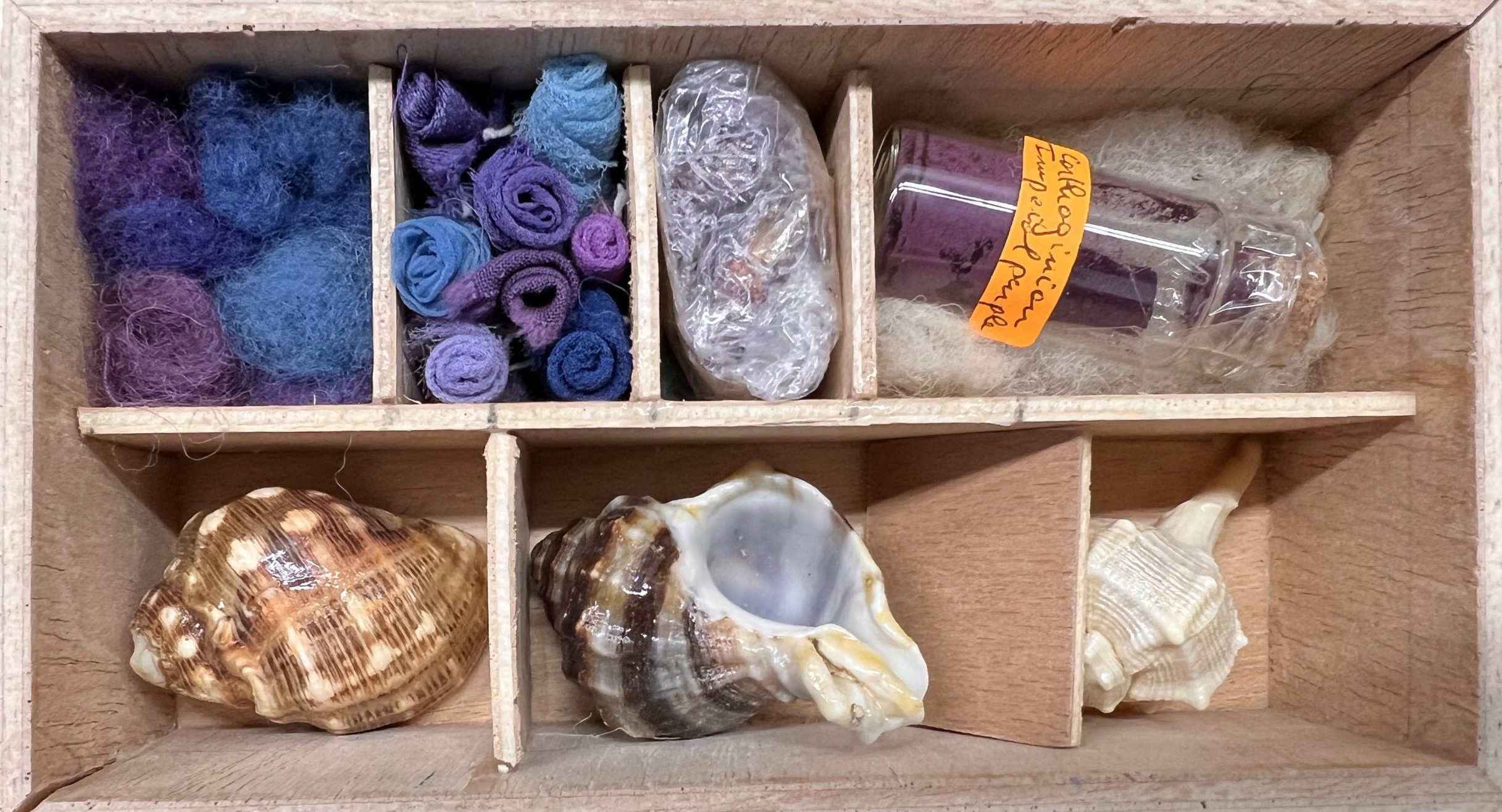
The workshop began with two lectures by the historian and archaelogist Berit Hildebrandt and Ghassen Nouira, who spoke to us on the historical meaning and current uses of this colour of high importance.These were then discussed with our invited guests, Kirsi Niinimäki, Pirjo Kääriäinen, Paavo Hohti, and Dustin Neighbours.
After the lectures, we tested the dying process. The process of dying purple from sea shells is complicated. The dye itself is produced in the gland of these shellfish. At first, it is colourless to the human eye, and only turns purple upon oxidation as it bleeds out from the gland. The dye can be applied either fresh, when it performs as a direct (substantive) dye without a need for a mordant or vatting; or it can be achieved utilising dried glands or purified extract, when the vat dye process is necessary. Vatting gives a more permanent result even for the fresh dye, so direct dyeing is not recommended.
In our experiment, we used dried glands, which are more convenient to transport and store than the fresh ones (just think about the smell of the strongest mussel soup you ever had with more than a whiff of decay, and the consequent look on the face of the officer at customs, and you will figure out why). For dyeing, using dried glands is also much more economical than the purified, powdered extract, which you would require for recreating an historical purple paint, for example.
For a full description of the dye process, see Purple from shellfish recipes and methods by Kirsi Mantua-Kommonen.
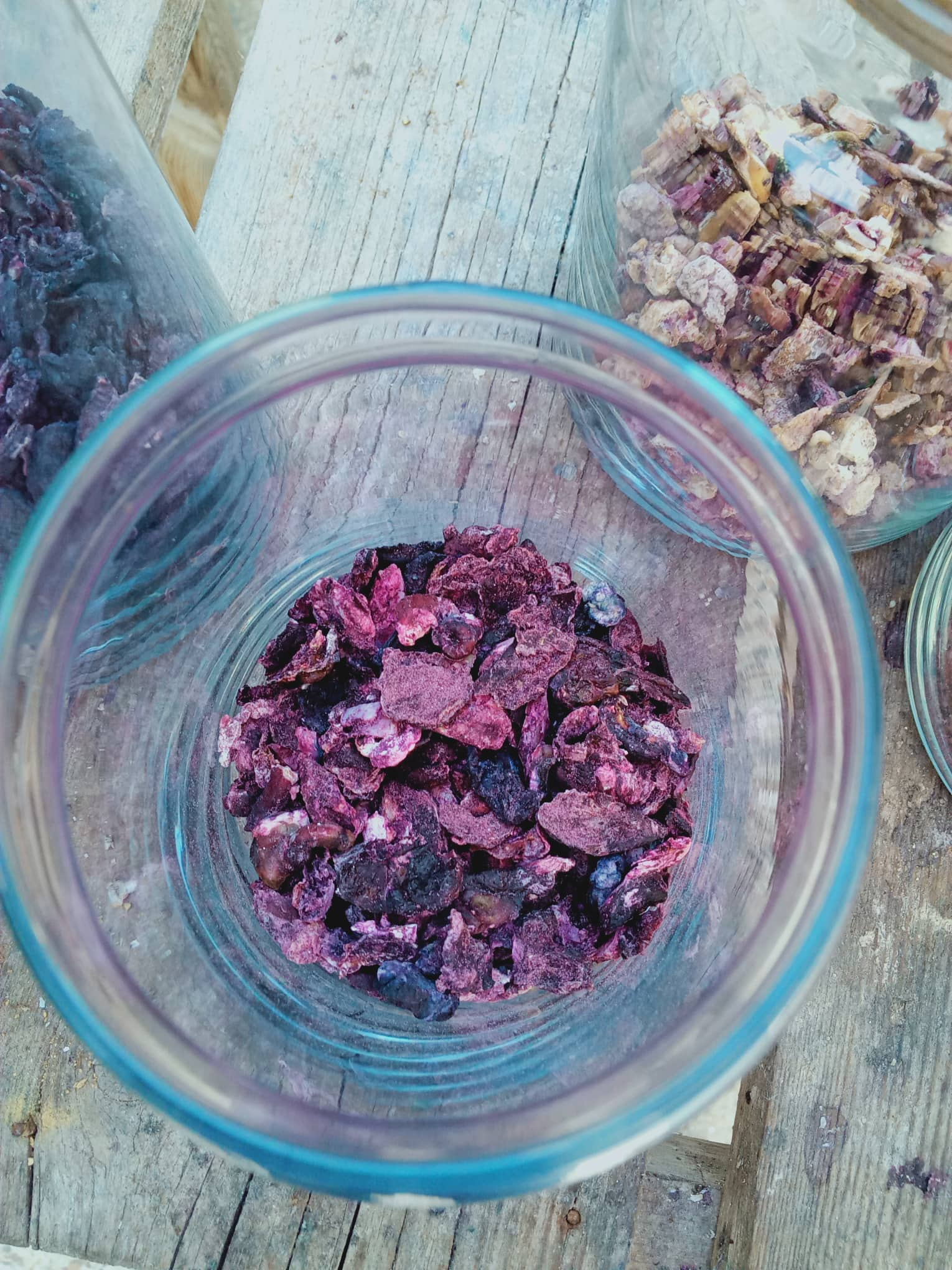 Dried glands in a glass jar. Photo © Kirsi Mantua-Kommonen
Dried glands in a glass jar. Photo © Kirsi Mantua-Kommonen
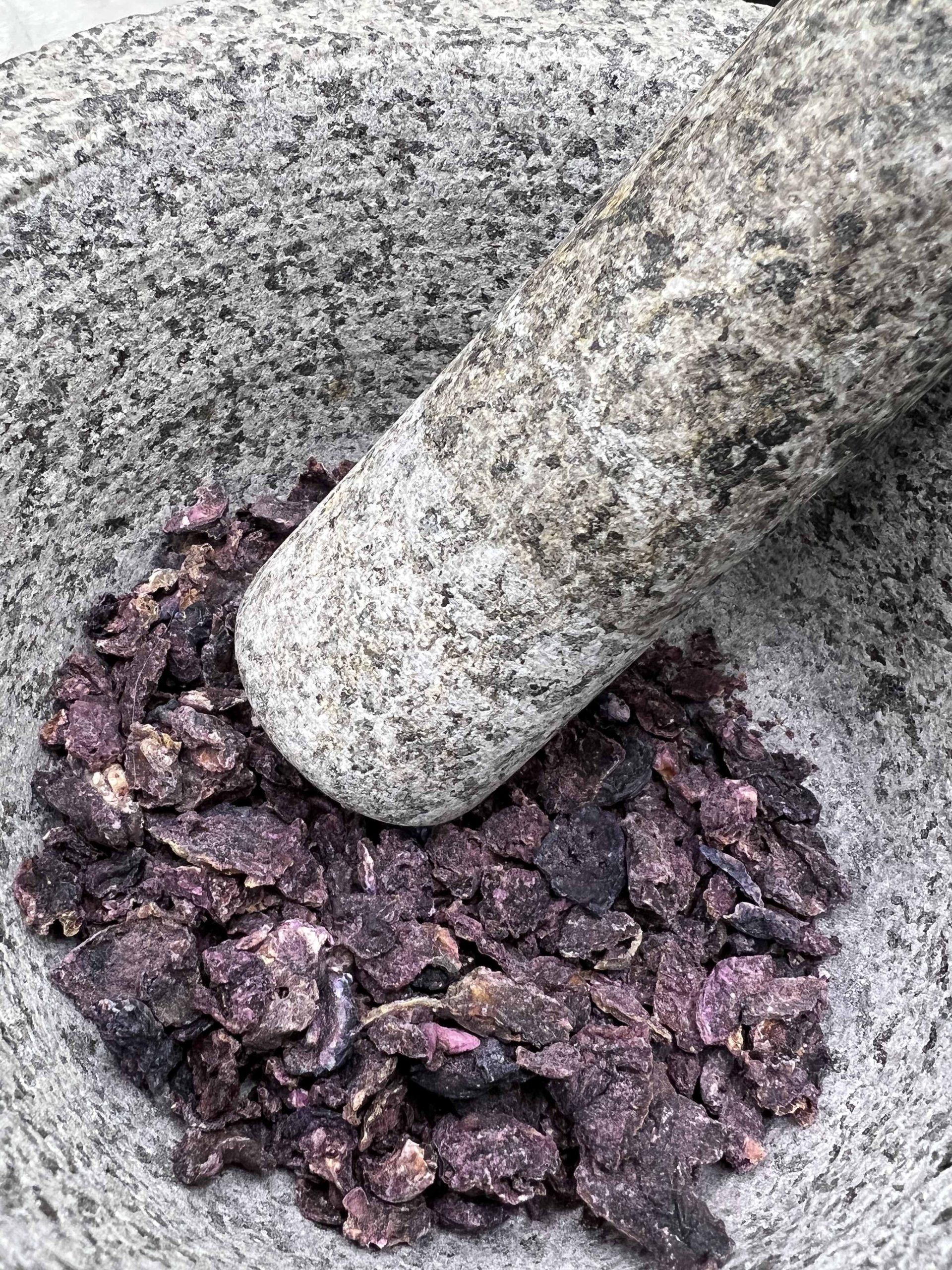 The glands crushed in a mortar. Photo © ERC-Refashioning/Fashion History Lab
The glands crushed in a mortar. Photo © ERC-Refashioning/Fashion History Lab
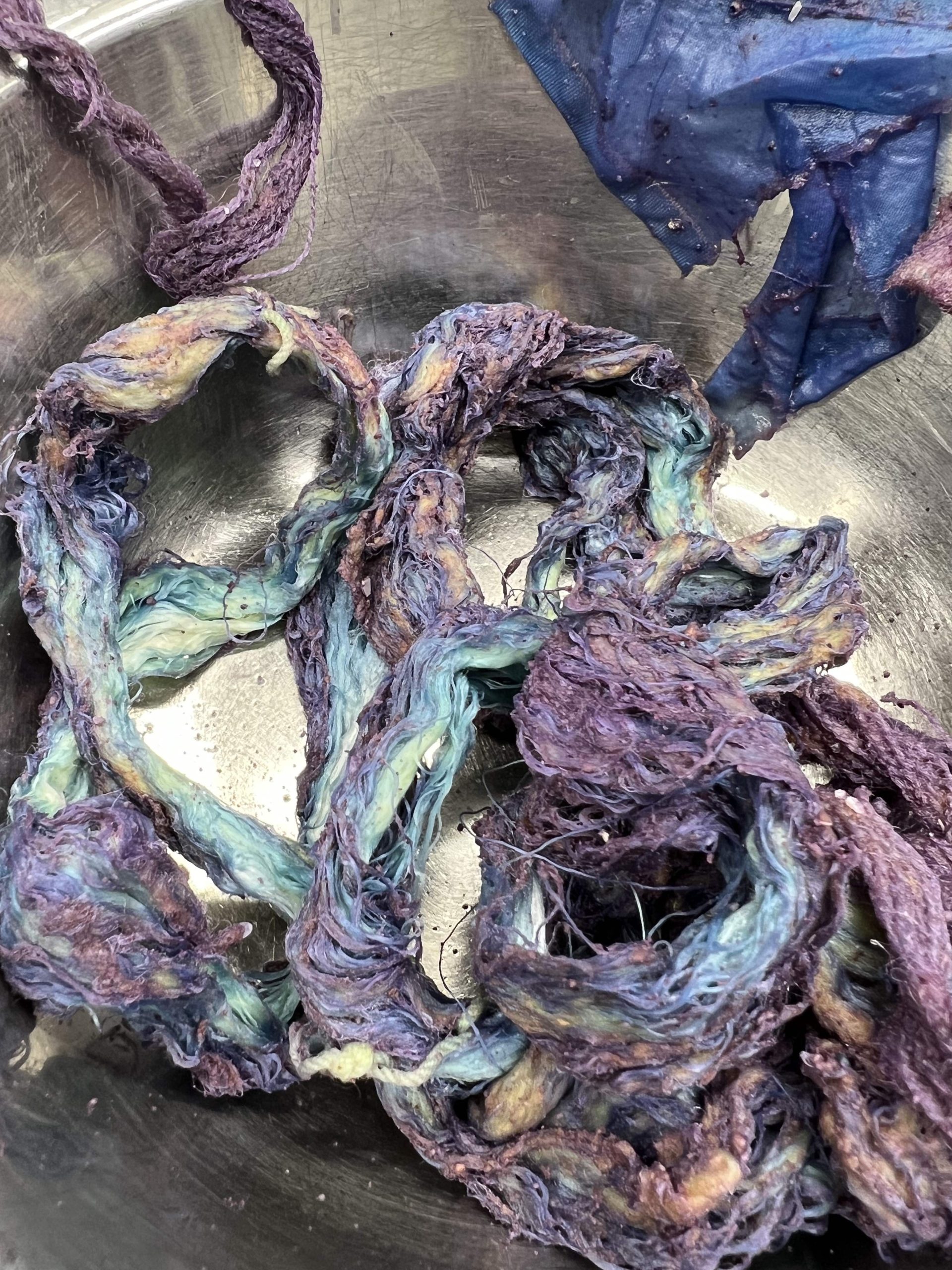 The colour changes in contact with oxygen and light. Photo © ERC-Refashioning/Fashion History Lab
The colour changes in contact with oxygen and light. Photo © ERC-Refashioning/Fashion History Lab
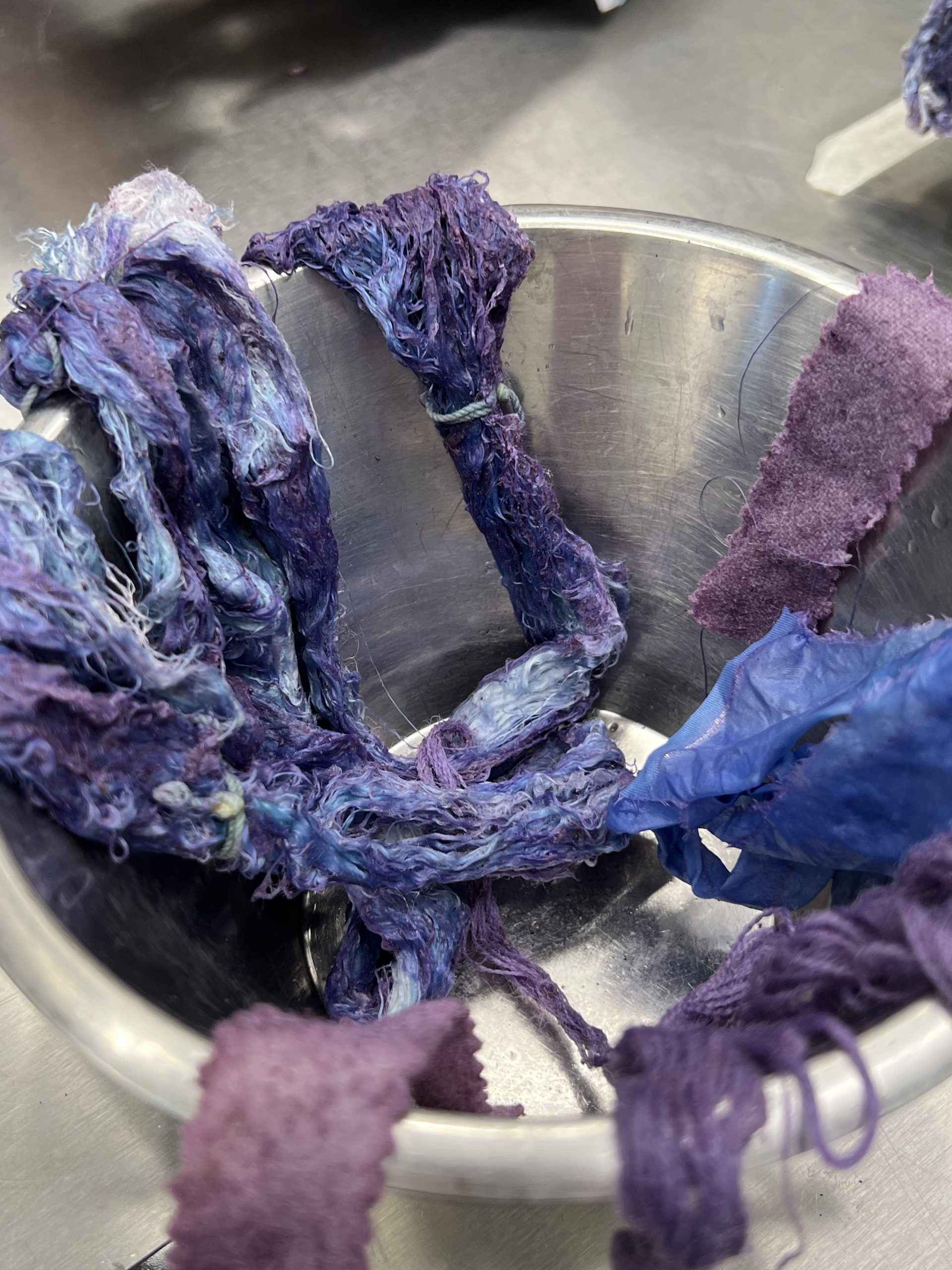 Variations of blues and purples. Photo © ERC-Refashioning/Fashion History Lab
Variations of blues and purples. Photo © ERC-Refashioning/Fashion History Lab
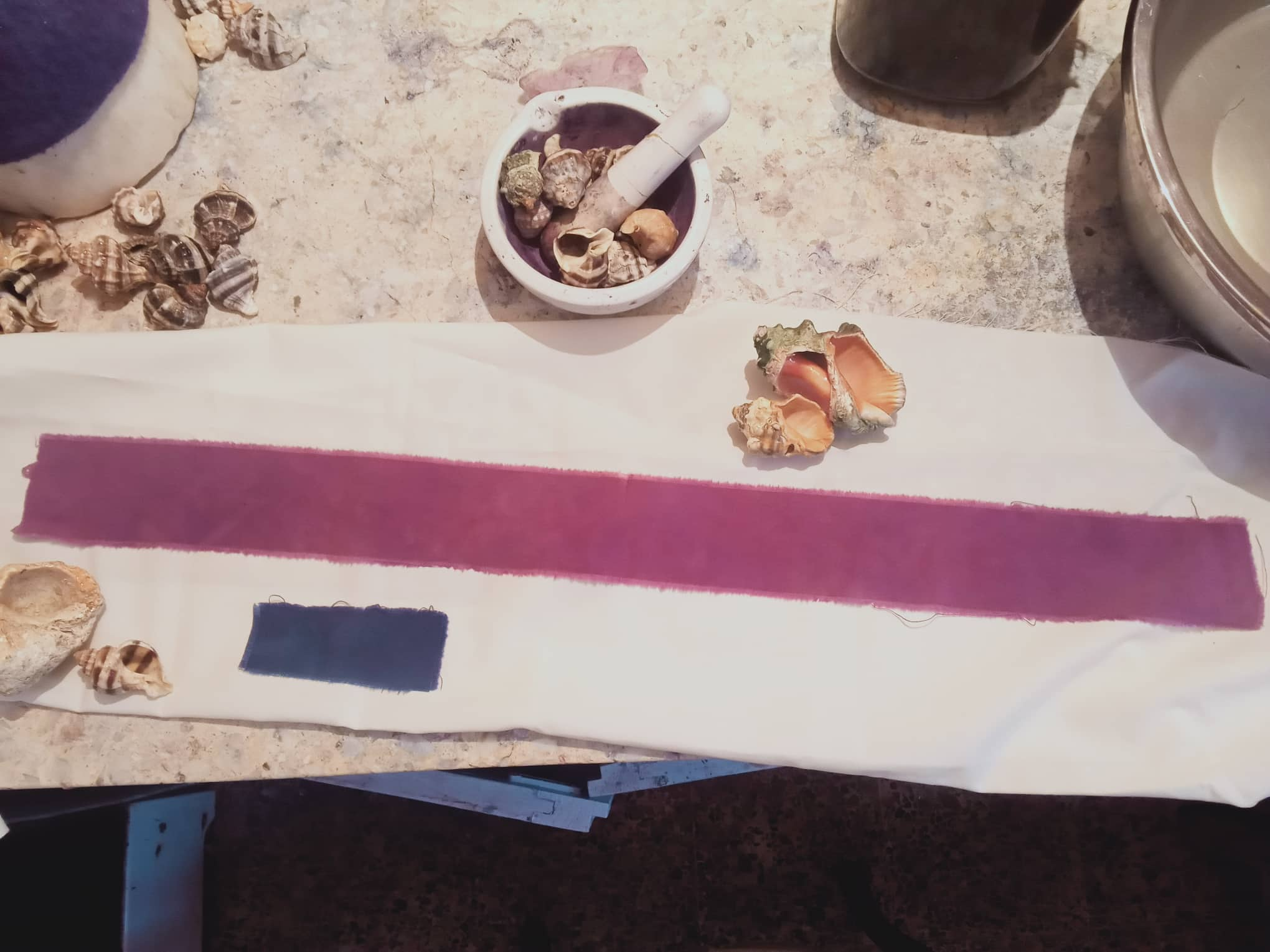 A strip of purple dyed with murex shells. Photo © Kirsi Mantua-Kommonen.
A strip of purple dyed with murex shells. Photo © Kirsi Mantua-Kommonen.
Considering that the hugely expensive dye was praised and admired for its brilliance and beauty, the resulting purple colour in our experiment was surprisingly bleak. Perhaps we need to keep researching, adjust our recipe and save money to obtain larger quantities of the dye in order to get the rich and deep purple that the Tyrian purple was known for among the rulers of the antiquity and the Byzantine.

